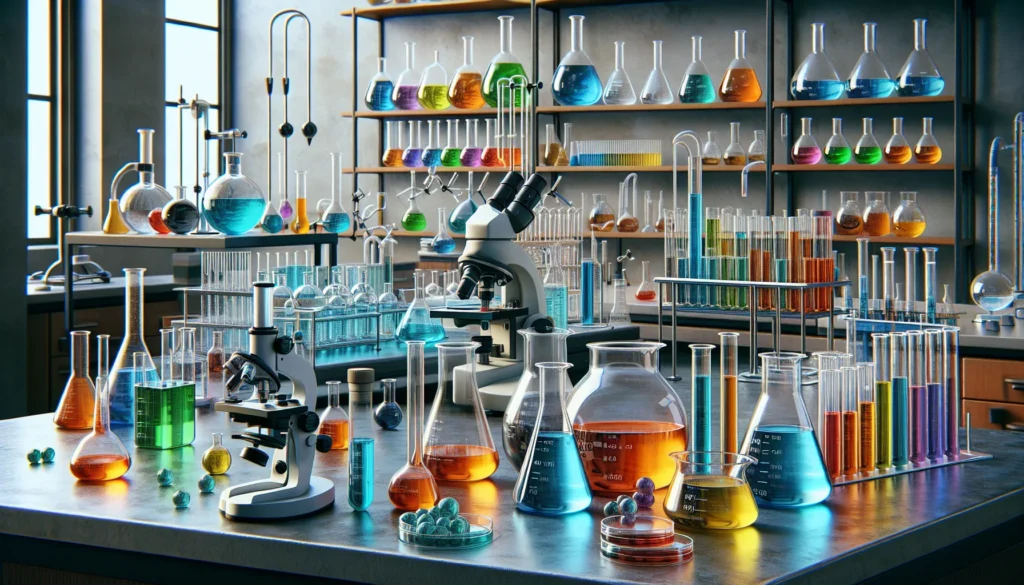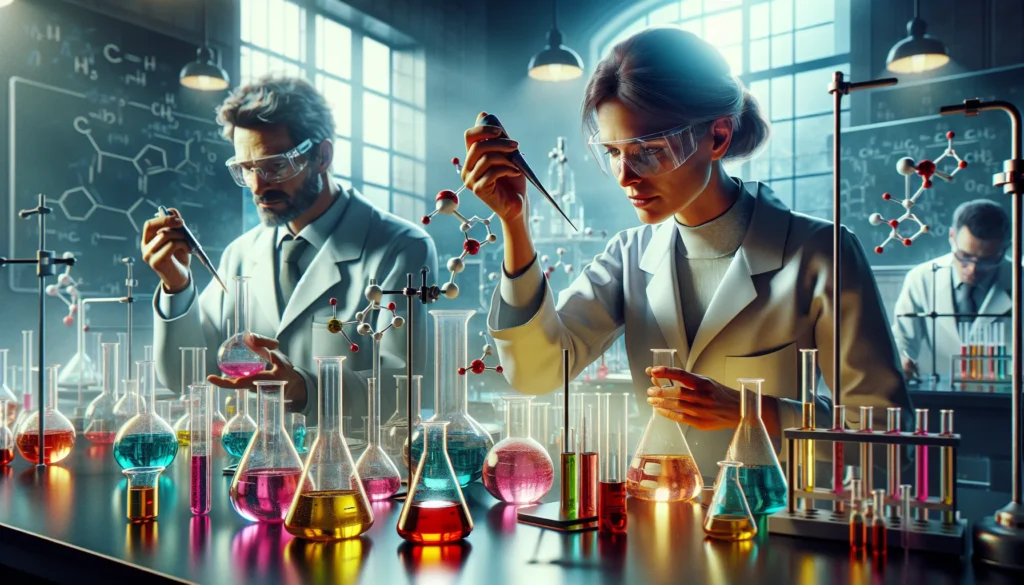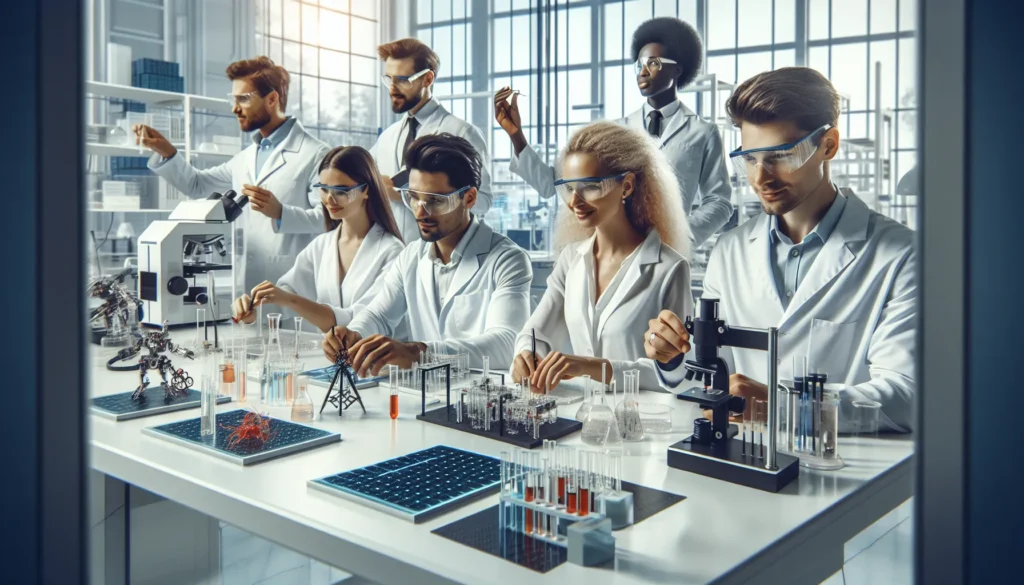Key Takeaways
- A “product” in science refers to the result of a process, such as a chemical reaction, biological transformation, or physical change, rather than a commercial good.
- Chemical products form when reactants interact, like water produced from hydrogen and oxygen, while biological products arise from processes like metabolism and photosynthesis.
- Physical products involve changes in state or form without altering chemical composition, such as water turning into ice.
- Scientific products reveal crucial insights that aid fields like technology, medicine, and environmental science, driving innovation and practical applications.
- Misunderstandings about “products” include confusing them with everyday goods or assuming they are always tangible—scientific products can also include energy or temporary elements.
- Clear knowledge of products and their formation is essential for understanding natural processes and advancements in science and technology.
When I first heard the word “product” in science, I thought it was just something you’d buy at a store. Turns out, in the world of science, it means something entirely different and way more fascinating. A product in science is all about the result of a process, whether it’s a chemical reaction, a biological change, or even a physical transformation.
Think about baking cookies. You mix ingredients, pop them in the oven, and voilà—the cookies are your product! In science, it’s kind of the same idea. Products are what you get after something has changed or been created, and understanding them helps us make sense of how the world works. Whether you’re into chemistry, biology, or physics, products are everywhere, shaping the way we explore and explain the universe.
Understanding The Term “Product” In Science
A “product” in science refers to the result of a process, such as a reaction or transformation, rather than a material good. It’s a crucial concept across scientific disciplines.
Origins And Definition
The term “product” originates from Latin, meaning “something produced.” In science, it describes substances or outcomes formed after a chemical reaction, biological process, or physical change. For example, in a chemical reaction, substances like water or carbon dioxide are products formed when reactants combine or break apart.
Importance Of Products In Scientific Processes
Products help scientists understand how processes work and what results they produce. In chemistry, identifying products helps verify reaction outcomes, such as forming salts from acids and bases. In biology, products like oxygen from photosynthesis provide insights into energy cycles. Across disciplines, products reveal vital information for research and application.
Types Of Products In Science

Products in science emerge from various interactions and processes. They fall into specific categories depending on the nature of their formation and their respective fields.
Chemical Products
Chemical products result from chemical reactions where reactants convert into new substances. For instance, when hydrogen reacts with oxygen, it forms water. In synthesis reactions, compounds combine to make more complex products like ammonia. In decomposition reactions, a compound breaks down, producing simpler molecules or elements, as seen when sodium chloride forms sodium and chlorine under electrolysis. Chemical products often include gases, liquids, or solids that scientists study to understand reaction dynamics.
Biological Products
Biological products are substances formed through biological processes like metabolism. Cells produce these compounds as part of their normal functions. Examples include glucose generated during photosynthesis and lactic acid formed in muscle cells during anaerobic respiration. Complex biological products, such as enzymes, hormones, and antibodies, play roles in regulating and supporting life processes. These products are crucial for research in fields like medicine, biotechnology, and genetics.
Physical Products
Physical products arise from changes in state or form without altering the substance’s chemical structure. Melting ice into water or evaporating liquids into vapor are examples. Condensation and crystallization processes also produce physical transformations, yielding products like rainwater or crystalline salts. These transformations help scientists explore states of matter, energy exchanges, and material properties.
How Products Are Formed In Scientific Experiments

Products form through interactions between substances during scientific experiments. These interactions often involve chemical, biological, or physical processes.
Role Of Reactants And Reactions
Reactants determine the nature of the products in any experiment. In a chemical reaction, reactants must interact or rearrange to form products. For instance, mixing hydrogen and oxygen gases under the right conditions results in water. In biological processes, enzymes often act as catalysts, breaking down or synthesizing molecules to generate new substances. Physical changes, like melting or freezing, involve reactants as well, although they don’t alter the composition of the substances.
The conditions of the reaction, like temperature, pressure, or pH, influence the type and amount of products formed. For example, high temperatures speed up many reactions, while specific pH levels are critical for enzymatic activity in living organisms.
Examples Of Scientific Product Formation
Various examples show how products emerge in scientific contexts. In chemistry, burning methane in oxygen produces carbon dioxide and water. In biology, plants convert carbon dioxide and water into glucose and oxygen during photosynthesis. Additionally, physical processes like freezing water form ice as the product, demonstrating changes in the state of matter without altering composition.
These examples underline the diversity of products formed based on the processes and conditions driving experiments.
Applications Of Scientific Products

Scientific products influence how we innovate, solve problems, and improve daily living. From advancing technology to enhancing convenience, they drive progress in both specialized fields and everyday scenarios.
In Technology And Innovation
In technology, scientific products foster breakthroughs. Materials like graphene enhance electronics with their conductivity and flexibility. Products derived from chemical synthesis, such as polymers, create lightweight yet durable components for transportation and construction. Biotechnological innovations, like CRISPR, enable precise genetic editing, revolutionizing medicine and agriculture. Renewable energy solutions, including solar panels and biofuels, rely on products from physical and chemical transformations to offer sustainable alternatives.
In Everyday Life
In daily life, scientific products simplify routines and increase comfort. Cleaning agents, including detergents, are chemical products designed for effective sanitation. Biological products, such as probiotics in foods, improve digestion and health. Physical products like insulating materials regulate indoor temperatures, conserving energy. Everyday items like batteries, developed through electrochemical advancements, power essential devices like phones and laptops, bridging science with convenience.
Misunderstandings About Products In Science
People often misunderstand scientific terms, especially “product,” due to its everyday usage. In science, a product isn’t something you buy; it’s the result of a process.
Common Myths And Misconceptions
One common myth is that products are always tangible substances. That’s false; products can be gases, energy, or even abstract outputs like information in computer science. For example, the light emitted during a chemical reaction, such as in glow sticks, is a product.
Another misconception is that products always remain stable. Some products, like intermediate compounds in chemical reactions, exist temporarily before transforming further. In metabolic pathways, for instance, glucose breaks down into several short-lived products during cellular respiration.
People also mistake product formation as purely random. In reality, the exact nature of a product depends on the specific reactants and conditions involved, like temperature or pH.
Clarifying Terminologies
The term “product” in science specifically refers to the outcome of a process. In chemistry, it’s what’s created when reactants interact, like water forming from hydrogen and oxygen. In biology, products emerge from processes like photosynthesis, where glucose and oxygen are formed from carbon dioxide and water in sunlight.
Unlike industrial or consumer “products,” scientific products focus on results driven by natural laws. For instance, while “chemical product” might imply commercial goods like detergents, in scientific contexts, it points to substances formed in reactions, such as salt (NaCl) from sodium and chlorine.
Conclusion
Understanding what a product means in science opens up a whole new way of looking at the world around us. It’s fascinating how everything from the air we breathe to the technology we use is tied to scientific processes creating products. These outcomes aren’t just limited to substances—they include energy, transformations, and even ideas that shape innovation.
By exploring the concept of products, we gain insights into the intricate workings of nature and the endless possibilities science offers. It’s a reminder of how interconnected everything is and how much there is still to learn.
Frequently Asked Questions
What does “product” mean in science?
In science, a “product” refers to the result or outcome of a process such as a chemical reaction, biological change, or physical transformation. It is different from a commercial item and represents the substance or result formed after reactants interact.
What are the main types of products in science?
The three main types of scientific products are chemical, biological, and physical. Chemical products result from reactions (e.g., water from hydrogen and oxygen), biological products stem from metabolic processes (e.g., glucose from photosynthesis), and physical products arise through state or form changes (e.g., melting ice).
How are products formed during chemical reactions?
During chemical reactions, products form when reactants interact under specific conditions, like temperature or pressure. For example, combining hydrogen and oxygen results in water, while combusting methane forms carbon dioxide and water.
How are scientific products used in everyday life?
Scientific products impact daily life by improving technology, health, and convenience. Examples include cleaning agents, probiotics, insulating materials, batteries, and renewable energy solutions derived from physical or chemical transformations.
Is a “product” in science the same as a consumer product?
No, a “product” in science refers to substances or outcomes formed from reactions or processes. For example, salt resulting from sodium and chlorine is a scientific product, unlike consumer products like detergents.
Are all products in science stable?
No, not all scientific products are stable. Some are unstable or temporary, depending on the conditions of their formation and the nature of the process they result from, such as intermediate compounds in chemical reactions.
Can scientific products include energy or intangible outcomes?
Yes, scientific products can include energy or abstract outputs, like light, heat, or information. For instance, in photosynthesis, both glucose and oxygen are products, along with stored chemical energy.
What role do products play in scientific research?
Products help scientists understand processes, verify reactions, and explore concepts like energy cycles. They provide insights into how reactions occur and drive advancements in fields like biology, chemistry, and physics.
Do products only form randomly in science?
No, products do not form randomly. Their formation is governed by natural laws and depends on specific factors, such as reactants, reaction conditions (temperature, pH, etc.), and catalysts.
Why is understanding products important in science?
Understanding products is crucial for exploring the universe, driving innovations, and solving practical problems. Products help researchers develop new technologies, improve processes, and find sustainable solutions in fields like medicine, agriculture, and energy.

